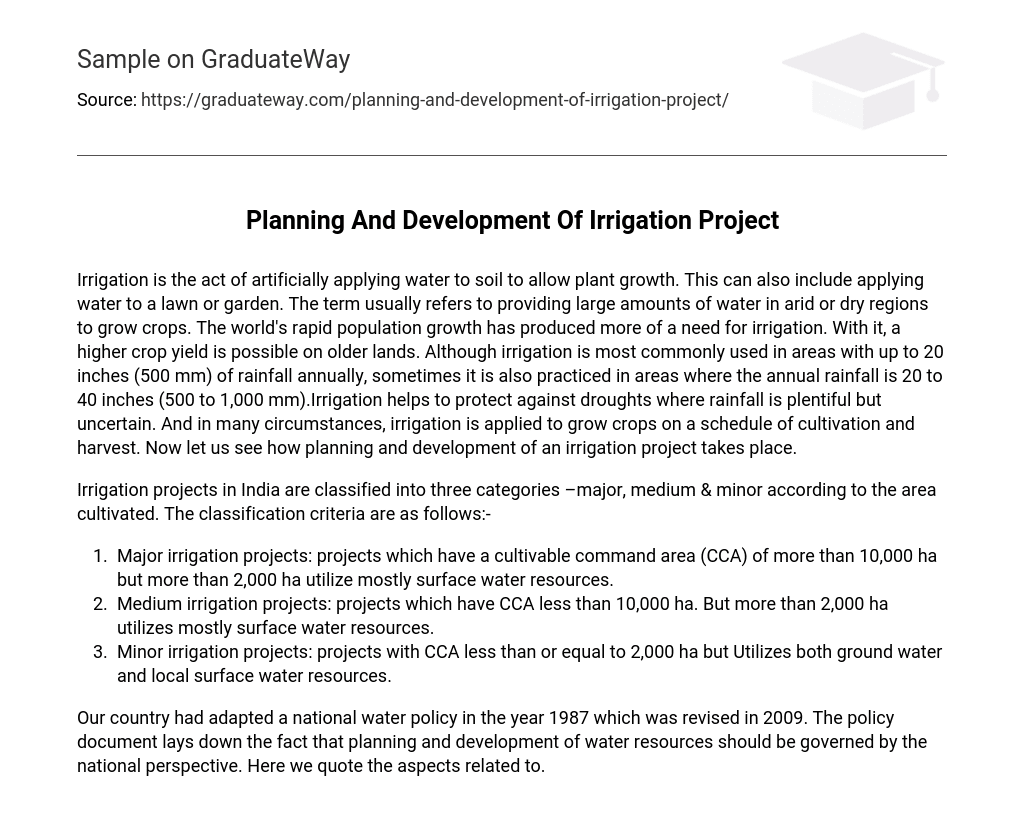Irrigation is the act of artificially applying water to soil to allow plant growth. This can also include applying water to a lawn or garden. The term usually refers to providing large amounts of water in arid or dry regions to grow crops. The world’s rapid population growth has produced more of a need for irrigation. With it, a higher crop yield is possible on older lands. Although irrigation is most commonly used in areas with up to 20 inches (500 mm) of rainfall annually, sometimes it is also practiced in areas where the annual rainfall is 20 to 40 inches (500 to 1,000 mm).Irrigation helps to protect against droughts where rainfall is plentiful but uncertain. And in many circumstances, irrigation is applied to grow crops on a schedule of cultivation and harvest. Now let us see how planning and development of an irrigation project takes place.
Irrigation projects in India are classified into three categories –major, medium & minor according to the area cultivated. The classification criteria are as follows:-
- Major irrigation projects: projects which have a cultivable command area (CCA) of more than 10,000 ha but more than 2,000 ha utilize mostly surface water resources.
- Medium irrigation projects: projects which have CCA less than 10,000 ha. But more than 2,000 ha utilizes mostly surface water resources.
- Minor irrigation projects: projects with CCA less than or equal to 2,000 ha but Utilizes both ground water and local surface water resources.
Our country had adapted a national water policy in the year 1987 which was revised in 2009. The policy document lays down the fact that planning and development of water resources should be governed by the national perspective. Here we quote the aspects related to.





